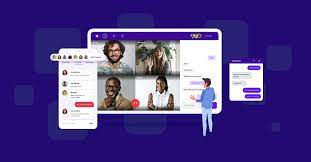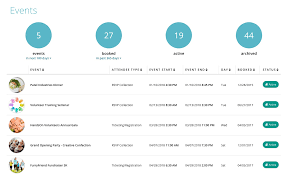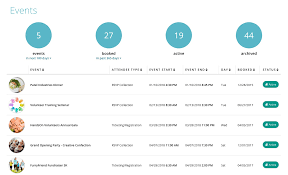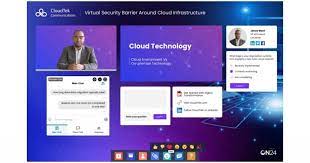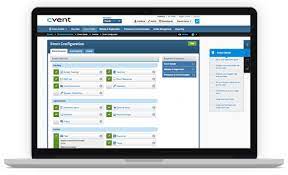Virtual Engagement Platforms: Revolutionizing Connection in the Digital Age
In today’s fast-paced and interconnected world, virtual engagement platforms have emerged as powerful tools that bridge the gap between people and organizations. These platforms have revolutionized the way we connect, collaborate, and engage with others, enabling us to overcome geographical barriers and embrace the digital age.
Virtual engagement platforms are online spaces that facilitate interactive experiences, allowing individuals and groups to come together virtually for various purposes. Whether it’s hosting virtual conferences, organizing webinars, conducting online training sessions, or even creating virtual trade shows, these platforms offer a plethora of possibilities.
One of the key advantages of virtual engagement platforms is their ability to bring people from different parts of the world together without the need for physical travel. This not only saves time and money but also reduces our carbon footprint. With just a few clicks, participants can join events from the comfort of their homes or offices, breaking down barriers and promoting inclusivity.
These platforms also provide an immersive experience through features like live video streaming, chat functionalities, interactive presentations, and networking opportunities. Participants can engage in real-time discussions with speakers or fellow attendees, ask questions during Q&A sessions, and even network with like-minded individuals through virtual breakout rooms.
Moreover, virtual engagement platforms offer flexibility in terms of scheduling and accessibility. Participants can choose to attend events at their convenience since many sessions are recorded for later viewing. This feature ensures that no one misses out on valuable content due to conflicting schedules or time zone differences.
For organizations and businesses, virtual engagement platforms open up new avenues for reaching a wider audience. Companies can showcase their products or services during virtual trade shows or host webinars to educate potential customers about their offerings. The ability to collect data on participant engagement levels also provides valuable insights for future marketing strategies.
Educational institutions have also embraced these platforms as they provide a seamless way to conduct online classes and workshops. Students from different locations can interact with their instructors and peers, fostering a sense of community and collaboration despite being physically distant.
However, as with any technology, virtual engagement platforms come with their own set of challenges. Ensuring reliable internet connectivity and providing technical support to participants are crucial factors for a successful virtual experience. Additionally, maintaining participant engagement in a virtual setting requires thoughtful planning and interactive elements to keep attendees actively involved.
In conclusion, virtual engagement platforms have revolutionized the way we connect and engage with others in the digital age. They offer an array of benefits such as overcoming geographical barriers, reducing costs, promoting inclusivity, and providing flexibility. These platforms have become an integral part of our lives, enabling us to connect with people from around the world and create meaningful experiences in a virtual environment.
8 Advantages of Virtual Engagement Platforms: Empowering Global Audiences, Cutting Costs, and Boosting Collaboration
- Increased access to remote and global audiences.
- Reduced travel costs and time spent away from work or family.
- Improved communication with customers, colleagues, and partners around the world.
- Enhanced collaboration through virtual tools such as video conferencing, chat rooms, and whiteboards.
- Increased engagement through interactive activities like polls, quizzes, and surveys.
- Ability to track participation in real-time for better data collection and analysis of user experiences during events or conferences.
- Improved customer service experience by providing personalized support to all attendees regardless of their location or device type used to access the platform .
- Flexibility in scheduling virtual events at any time that is convenient for all attendees without worrying about time zone differences or flight delays/cancellations
5 Cons of Virtual Engagement Platforms: Exploring the Downsides of Limited Social Interaction, Technical Challenges, Security Risks, Engagement Limitations, and Privacy Concerns
- Lack of Social Interaction
- Technical Issues
- Security Concerns
- Limited Engagement Opportunities
- Lack of Privacy
Increased access to remote and global audiences.
Increased Access to Remote and Global Audiences: The Power of Virtual Engagement Platforms
In the digital era, virtual engagement platforms have become game-changers by breaking down geographical barriers and connecting people from all corners of the globe. One significant advantage of these platforms is their ability to provide increased access to remote and global audiences like never before.
Traditionally, reaching a remote or global audience required extensive planning, travel arrangements, and significant financial investments. However, virtual engagement platforms have transformed this process into a seamless experience that can be accessed from anywhere with an internet connection.
With virtual engagement platforms, businesses, organizations, and individuals can effortlessly connect with audiences located in different time zones or remote areas. Whether it’s hosting webinars, conferences, training sessions, or even cultural events, these platforms enable real-time interactions and participation regardless of physical distance.
The impact of increased access to remote and global audiences is profound. Businesses can now expand their reach beyond local markets and tap into new customer bases around the world. This opens up exciting opportunities for growth and expansion without the need for costly travel or establishing physical presence in multiple locations.
Similarly, organizations can effortlessly engage with stakeholders such as employees, partners, and clients spread across different regions. Virtual engagement platforms facilitate seamless communication channels where ideas can be shared, questions can be answered in real-time, and collaborations can flourish despite physical separation.
Furthermore, these platforms have revolutionized education by providing access to quality learning resources for students in remote areas or those unable to attend traditional classrooms. Online courses and virtual classrooms enable students to learn from renowned educators worldwide without leaving their homes. This not only promotes inclusivity but also ensures that knowledge knows no boundaries.
The benefits of increased access to remote and global audiences extend beyond business and education sectors. Cultural events such as art exhibitions or music performances can now be enjoyed by people worldwide through virtual engagement platforms. This fosters cultural exchange while allowing artists to showcase their talents on an international stage without the limitations of physical venues.
However, it’s important to note that while virtual engagement platforms offer increased access, ensuring inclusivity and equal opportunities for all participants is crucial. Factors such as internet connectivity, language barriers, and accessibility features need to be considered to ensure a truly global and inclusive experience.
In conclusion, virtual engagement platforms have revolutionized the way we connect with remote and global audiences. They have democratized access to information, knowledge, and opportunities by eliminating geographical limitations. Businesses can expand their reach, organizations can foster collaboration, and education can transcend borders. As these platforms continue to evolve, we can expect even greater inclusivity and connectivity in the digital realm.
Reduced travel costs and time spent away from work or family.
Virtual Engagement Platforms: Reducing Costs and Enhancing Work-Life Balance
In the era of virtual engagement platforms, one of the standout benefits is the significant reduction in travel costs and the time spent away from work or family. These platforms have revolutionized how we connect and collaborate, allowing us to participate in events and engage with others from the comfort of our own homes or offices.
Traditionally, attending conferences, seminars, or business meetings often required extensive travel arrangements. This meant booking flights, hotels, and transportation, which could quickly accumulate substantial expenses. Moreover, being away from work or family for extended periods was not only financially burdensome but also emotionally challenging.
However, with virtual engagement platforms, these concerns are alleviated. By eliminating the need for physical travel, individuals can save a significant amount of money that would have otherwise been spent on transportation, accommodation, meals, and other related expenses. This cost reduction opens up opportunities for more people to participate in events that were previously financially unfeasible.
Additionally, virtual engagement platforms provide a valuable solution for maintaining a healthy work-life balance. Professionals no longer need to sacrifice precious time away from their families or take extended leaves from work to attend conferences or meetings in distant locations. Instead, they can engage virtually while still fulfilling their personal and professional responsibilities.
The time saved by avoiding travel also allows individuals to allocate more time towards productive tasks or leisure activities. By participating in virtual events from their own environment, attendees have greater flexibility to manage their schedules effectively. This newfound flexibility enhances overall well-being and reduces stress associated with juggling multiple commitments.
Furthermore, reduced travel contributes positively to environmental sustainability efforts. With fewer flights taken and less commuting involved in attending events physically, carbon emissions are significantly reduced. Embracing virtual engagement platforms aligns with global initiatives aiming to minimize our ecological impact and build a greener future.
In conclusion, virtual engagement platforms offer a remarkable advantage by reducing travel costs and minimizing time spent away from work or family. The financial savings, improved work-life balance, and positive environmental impact make these platforms an attractive choice for individuals and organizations alike. As we continue to embrace the digital age, leveraging virtual engagement platforms becomes increasingly essential in enhancing connectivity while maintaining a healthy and balanced lifestyle.
Improved communication with customers, colleagues, and partners around the world.
Improved Communication with Customers, Colleagues, and Partners Around the World: The Power of Virtual Engagement Platforms
In today’s globalized world, effective communication is key to success in any business or professional endeavor. Virtual engagement platforms have emerged as powerful tools that enable improved communication with customers, colleagues, and partners around the world. These platforms have revolutionized the way we connect, collaborate, and build relationships across geographical boundaries.
One of the greatest advantages of virtual engagement platforms is their ability to bring people together regardless of their physical location. Through features like video conferencing, instant messaging, and file sharing capabilities, these platforms facilitate seamless communication in real-time. Whether it’s discussing project updates with colleagues in different time zones or providing support to customers in distant locations, virtual engagement platforms ensure that distance is no longer a barrier.
With virtual engagement platforms, businesses can connect with their customers on a deeper level. Through video calls or webinars, companies can provide personalized product demonstrations or conduct interactive training sessions. This not only enhances customer satisfaction but also boosts sales by building trust and credibility.
For colleagues working remotely or in different offices globally, virtual engagement platforms foster collaboration and teamwork. Team members can communicate effortlessly through chat functionalities or hold virtual meetings where ideas can be shared and decisions made collectively. These platforms also allow for easy document sharing and version control, ensuring everyone has access to the latest information.
Virtual engagement platforms also facilitate effective communication with partners and stakeholders across borders. Whether it’s negotiating contracts with international suppliers or conducting joint meetings with overseas partners, these platforms enable seamless collaboration without the need for costly travel expenses.
Furthermore, virtual engagement platforms offer language translation services that break down language barriers during conversations or presentations. This feature ensures that participants from different linguistic backgrounds can communicate effectively without any misunderstandings.
In addition to improving communication efficiency, virtual engagement platforms provide a cost-effective solution for businesses. The need for expensive international travel is significantly reduced as meetings and interactions can be conducted virtually. This not only saves money but also reduces the environmental impact associated with travel.
However, it is important to note that while virtual engagement platforms offer numerous benefits, they require proper implementation and user training for optimal results. Reliable internet connectivity and technical support are essential to ensure smooth communication experiences.
In conclusion, virtual engagement platforms have transformed the way we communicate with customers, colleagues, and partners around the world. These platforms break down geographical barriers, enhance collaboration, and foster stronger relationships. By embracing virtual engagement platforms, businesses can unlock a world of opportunities and establish themselves as global players in an increasingly interconnected world.
Enhanced Collaboration: Unlocking the Power of Virtual Engagement Platforms
In today’s fast-paced and interconnected world, collaboration has become a cornerstone of success for individuals and organizations alike. With the advent of virtual engagement platforms, collaboration has taken on a whole new meaning, empowering teams to work together seamlessly regardless of geographical boundaries.
One of the key advantages of virtual engagement platforms is the enhanced collaboration they offer through a range of virtual tools. These tools include video conferencing, chat rooms, and whiteboards, which enable teams to communicate, brainstorm ideas, and work on projects in real-time.
Video conferencing has become an invaluable tool for remote teams. It allows team members to see and hear each other as if they were in the same room, fostering a sense of connection and enhancing communication. Through video conferencing, colleagues can discuss ideas face-to-face, share screens to present information or collaborate on documents together. This level of interaction helps build trust and strengthens relationships among team members.
Chat rooms provide a platform for instant messaging and quick exchanges between team members. They enable real-time communication that is essential for swift decision-making and problem-solving. Team members can exchange ideas, ask questions, share links or files, all within a collaborative digital space. Chat rooms also serve as a record of conversations that can be referred back to later for clarity or reference.
Whiteboards are another powerful tool offered by virtual engagement platforms that facilitate collaboration. They allow users to visually express their ideas by drawing diagrams, sketches, or writing notes in real-time. Multiple participants can contribute simultaneously to the whiteboard during brainstorming sessions or collaborative discussions. This visual aid enhances understanding and promotes creativity among team members.
By harnessing these virtual tools within engagement platforms, organizations unlock new levels of productivity and efficiency in their collaborations. Virtual engagement platforms break down barriers imposed by physical distance and time zones, enabling teams from different locations to work together seamlessly.
Moreover, these tools reduce the need for extensive travel, saving time and resources while minimizing the carbon footprint. Virtual collaboration through engagement platforms empowers organizations to tap into a global talent pool, bringing together diverse perspectives and expertise for more innovative solutions.
In conclusion, virtual engagement platforms offer a multitude of tools that enhance collaboration among teams. Video conferencing, chat rooms, and whiteboards enable real-time communication, idea sharing, and visual collaboration. By leveraging these virtual tools, organizations can foster teamwork, improve decision-making processes, and unlock the full potential of their teams regardless of physical proximity. Embracing virtual engagement platforms is a step towards harnessing the power of collaboration in the digital age.
Increased engagement through interactive activities like polls, quizzes, and surveys.
Increased Engagement: Unleashing the Power of Interactive Activities on Virtual Engagement Platforms
In the realm of virtual engagement platforms, one standout benefit is the ability to boost participant engagement through a variety of interactive activities. These platforms have revolutionized the way we connect and collaborate by incorporating elements like polls, quizzes, and surveys that captivate audiences and encourage active participation.
One of the key advantages of virtual engagement platforms is their ability to create an immersive experience through interactive activities. By integrating features such as live polls, quizzes, and surveys, organizers can transform passive viewers into active participants. These activities provide an opportunity for attendees to share their thoughts, opinions, and knowledge in real-time.
Live polls are a powerful tool that allows presenters to gauge audience opinions or preferences instantly. By posing questions during a session or event, participants can respond with just a click, providing valuable feedback and insights. This not only encourages engagement but also facilitates two-way communication between the presenter and the audience.
Quizzes are another engaging feature offered by virtual engagement platforms. Presenters can incorporate quizzes into their presentations to test participants’ understanding or knowledge on specific topics. This gamified approach not only adds an element of fun but also motivates attendees to actively participate and strive for correct answers.
Surveys are yet another interactive activity that holds immense value in virtual engagement platforms. Organizers can gather feedback from participants through post-event surveys to assess satisfaction levels, identify areas for improvement, or measure learning outcomes. Surveys provide valuable data that helps shape future events or sessions based on attendee preferences and needs.
The inclusion of these interactive activities on virtual engagement platforms has proven to be highly effective in capturing attention and fostering meaningful interactions among participants. By encouraging active involvement rather than passive consumption, these activities create a sense of ownership and belonging within the virtual community.
Increased engagement through interactive activities offers numerous benefits for both organizers and attendees alike. For organizers, it allows them to gather valuable data and insights, tailor content to meet audience needs, and enhance the overall event experience. Attendees, on the other hand, benefit from a more dynamic and engaging virtual environment that encourages knowledge sharing, networking, and active participation.
In conclusion, virtual engagement platforms have transformed the way we connect by leveraging interactive activities such as polls, quizzes, and surveys. These features not only increase engagement but also foster a sense of community and collaboration among participants. By incorporating these elements into virtual events or sessions, organizers can create an immersive experience that captivates audiences and drives meaningful interactions.
Ability to track participation in real-time for better data collection and analysis of user experiences during events or conferences.
The Ability to Track Participation in Real-Time: Enhancing Data Collection and Analysis in Virtual Engagement Platforms
One of the standout advantages of virtual engagement platforms is their ability to track participation in real-time, providing valuable data for analysis and improving user experiences during events or conferences. This feature has revolutionized the way organizations gather insights, enabling them to make data-driven decisions that enhance engagement and overall event success.
In traditional events or conferences, tracking participant engagement and collecting data can be a challenging task. It often involves manual methods such as sign-in sheets or surveys distributed after the event. These methods are not only time-consuming but also prone to errors and incomplete responses. However, virtual engagement platforms offer a more efficient and accurate solution.
By utilizing virtual engagement platforms, organizers can collect real-time data on attendee participation throughout an event. They can monitor metrics such as session attendance, duration of participation, interactions with speakers or other attendees, and engagement levels during presentations or discussions. This wealth of information allows organizers to gain insights into attendee behavior and preferences instantly.
The ability to track participation in real-time provides several benefits for event organizers. Firstly, it allows for immediate adjustments during an ongoing event if certain sessions or topics are not resonating with participants. Organizers can identify areas that need improvement and make timely changes to ensure a more engaging experience for attendees.
Secondly, real-time data collection enables organizers to measure the success of their event in terms of participant engagement levels. By analyzing metrics like session attendance rates and interaction patterns, they can gauge the effectiveness of different elements within the event program. This information helps them identify what works well and what needs refinement for future events.
Furthermore, tracking participation in real-time also facilitates personalized follow-ups with attendees post-event. Organizers can use the collected data to tailor communications based on individual interests or areas of engagement during the event. This personalized approach enhances attendee satisfaction and strengthens relationships between organizers and participants.
From a broader perspective, the ability to track participation in real-time provides valuable insights for data analysis and decision-making. Organizers can identify trends, patterns, and preferences among attendees, enabling them to make informed choices when planning future events. This data-driven approach helps optimize event experiences and maximize attendee satisfaction.
In conclusion, the ability to track participation in real-time is a significant pro of virtual engagement platforms. It empowers event organizers with accurate and instant data collection, enabling them to analyze user experiences and make informed decisions. By leveraging this feature, organizations can enhance engagement levels, tailor their events to meet attendee preferences, and ultimately create more successful and impactful virtual experiences.
Virtual Engagement Platforms: Enhancing Customer Service Experience Across Boundaries
In the era of virtual engagement platforms, businesses have gained a powerful tool to elevate their customer service experience. One notable advantage is the ability to provide personalized support to all attendees, irrespective of their location or the device they use to access the platform. This advancement has revolutionized the way organizations connect with their customers, ensuring a seamless and tailored experience for every individual.
Gone are the days when customer support was limited to phone calls or emails. With virtual engagement platforms, businesses can now offer real-time assistance and personalized support through chat functionalities, video calls, or even virtual help desks. Regardless of whether a customer is attending a virtual conference, webinar, or trade show, they can receive immediate assistance from dedicated support staff.
The beauty of these platforms lies in their versatility. Customers can engage with support representatives using their preferred devices such as smartphones, tablets, or laptops. No matter where they are located geographically, they can access the platform and receive prompt assistance without any hassle.
By providing personalized support across boundaries, businesses demonstrate their commitment to customer satisfaction. Attendees feel valued and appreciated when they receive individualized attention tailored to their specific needs and concerns. This level of care fosters stronger relationships between businesses and customers, leading to increased loyalty and positive brand perception.
Moreover, virtual engagement platforms enable businesses to gather valuable data about attendees’ preferences and behaviors during interactions. This information helps organizations understand their customers better and refine their service offerings accordingly. By analyzing data on customer interactions within the platform, companies can identify patterns and trends that further enhance the overall customer service experience.
Another advantage of personalized support on virtual engagement platforms is its cost-effectiveness compared to traditional methods. Businesses can allocate resources more efficiently by reducing expenses associated with physical call centers or extensive travel for on-site support teams. This not only saves money but also allows companies to invest in other areas that contribute to improving customer satisfaction.
In conclusion, virtual engagement platforms have transformed the customer service landscape by offering personalized support to attendees, regardless of their location or the device they use. This advancement has strengthened the bond between businesses and customers, fostering loyalty and positive brand perception. By leveraging these platforms, organizations can deliver exceptional customer service experiences while optimizing resources and gaining valuable insights for future improvements.
Flexibility in scheduling virtual events at any time that is convenient for all attendees without worrying about time zone differences or flight delays/cancellations
Flexibility in Scheduling: Unlocking the Power of Virtual Engagement Platforms
Gone are the days when scheduling conflicts and time zone differences posed significant challenges for event organizers and attendees. Thanks to virtual engagement platforms, the power of flexibility has been unleashed, allowing events to be scheduled at any time that is convenient for all participants.
One of the greatest advantages of virtual engagement platforms is their ability to transcend geographical boundaries and eliminate the need for physical travel. With traditional in-person events, coordinating schedules across different time zones could be a logistical nightmare. Flight delays or cancellations could further complicate matters, causing frustration and potential missed opportunities.
However, with virtual engagement platforms, these concerns become a thing of the past. Organizers can seamlessly plan events without worrying about flight schedules or travel arrangements. Attendees can join from anywhere in the world, eliminating the need for costly and time-consuming travel.
The flexibility in scheduling offered by virtual engagement platforms opens up a world of possibilities. It allows participants to attend events at their convenience, ensuring that they don’t miss out due to conflicting commitments or time zone challenges. Whether it’s a conference, webinar, training session, or even a trade show, attendees can access content whenever it suits them best.
Moreover, many virtual engagement platforms provide options for on-demand viewing. This means that even if an attendee cannot make it to a live session due to unforeseen circumstances or conflicting obligations, they can still access the recorded content later at their convenience. This flexibility ensures that valuable information is not lost and that participants can benefit from the event’s content whenever it suits them best.
The elimination of time zone constraints also fosters inclusivity and global collaboration. Participants from different regions can easily connect and engage without worrying about inconvenient timing or missing out on important discussions. This promotes diversity and allows for a broader exchange of ideas among individuals from various backgrounds.
In summary, the flexibility in scheduling offered by virtual engagement platforms has transformed the way we plan and attend events. It has removed the barriers of time zone differences and travel constraints, allowing organizers to cater to a global audience. Attendees can now participate in events at their convenience, ensuring that valuable content is accessible to all. With virtual engagement platforms, scheduling conflicts and logistical headaches are no longer obstacles, empowering individuals and organizations to connect and collaborate seamlessly in the digital realm.
Lack of Social Interaction
Lack of Social Interaction: The Challenge of Building Relationships in Virtual Engagement Platforms
While virtual engagement platforms offer numerous benefits, one significant drawback is the potential lack of social interaction. Unlike face-to-face meetings, where you can read body language, engage in spontaneous conversations, and build relationships through personal connections, virtual platforms can sometimes feel impersonal and detached.
In a digital setting, it can be challenging to establish the same level of trust and camaraderie that comes naturally in person. Non-verbal cues such as facial expressions and body language play a crucial role in communication, conveying emotions and building rapport. Without these visual cues, participants may find it difficult to gauge others’ reactions or fully understand the intended message.
Additionally, virtual engagement platforms often rely heavily on text-based communication or pre-recorded presentations. While these methods are efficient for sharing information, they may lack the spontaneity and fluidity that face-to-face conversations provide. The absence of real-time interaction can hinder natural conversation flows and impede the development of meaningful connections.
Building relationships through virtual platforms requires intentional effort from all participants. It’s crucial to actively engage in discussions, ask questions, and seek opportunities for informal conversations during breaks or networking sessions. Utilizing video conferencing whenever possible can also help bridge the gap by allowing participants to see each other’s faces and expressions.
To overcome this con, organizers can incorporate interactive elements into virtual events. This could include breakout rooms for smaller group discussions or incorporating live polls and surveys to encourage active participation. Additionally, providing opportunities for networking or socializing outside of formal sessions can help foster connections among attendees.
While virtual engagement platforms may lack some aspects of traditional social interaction, they should be seen as complementary tools rather than complete replacements for face-to-face meetings. By acknowledging their limitations and actively working to create engaging experiences within these platforms, we can mitigate the challenges posed by the lack of social interaction and continue to benefit from the convenience and accessibility they offer.
Technical Issues
Technical Issues: A Challenge in Virtual Engagement Platforms
While virtual engagement platforms have revolutionized the way we connect and collaborate, they are not without their challenges. One significant drawback is the presence of technical issues that can hinder the overall engagement experience.
One common obstacle is the requirement for specialized hardware and software to access these platforms. Depending on the platform’s complexity, participants may need high-quality cameras, microphones, or specific operating systems to fully engage in virtual events. This can be costly for individuals or organizations that do not already possess such equipment.
Moreover, the learning curve associated with using new software or tools can be a barrier for some users. Not everyone is tech-savvy or comfortable navigating unfamiliar interfaces. This can lead to frustration and a steep learning curve, potentially limiting participation and engagement levels.
Another critical challenge arises from technical glitches that can occur during virtual events. Poor internet connections or slow response times can disrupt presentations, causing delays or even complete disconnections. Such interruptions not only disrupt the flow of information but also negatively impact participant engagement and satisfaction.
Technical issues can also affect interactive elements within virtual engagement platforms. Features like live chat, polls, or breakout rooms may experience glitches that hinder smooth communication and collaboration among participants. These disruptions impede the overall effectiveness of virtual events and may leave attendees feeling disconnected.
To mitigate these challenges, it is essential for platform providers to offer robust technical support services. Prompt assistance should be readily available to address any hardware or software-related concerns that participants may encounter during their virtual engagements. Clear instructions and user-friendly interfaces can also help minimize confusion and facilitate smoother user experiences.
Additionally, organizers should take into account potential technical issues when planning virtual events. Adequate testing of equipment and internet connections beforehand can help identify and address any potential problems proactively. Backup plans should also be in place to handle unexpected disruptions swiftly.
While technical issues pose a con in virtual engagement platforms, it is important to note that advancements in technology continue to improve the overall user experience. As technology evolves, we can expect these challenges to become less prevalent, making virtual engagement platforms even more accessible and seamless for all users.
In conclusion, while virtual engagement platforms offer numerous benefits, technical issues can present obstacles that hinder the engagement experience. Specialized hardware and software requirements, along with potential glitches and connectivity problems, can disrupt the smooth flow of virtual events. However, with proper support and contingency planning, these challenges can be mitigated, ensuring a more seamless and enjoyable virtual engagement experience for all participants.
Security Concerns
Security Concerns: Safeguarding Virtual Engagement Platforms in the Digital Era
While virtual engagement platforms have undoubtedly transformed the way we connect and collaborate, it is essential to address the potential security concerns that come with this digital revolution. As with any online platform, virtual engagement spaces may be vulnerable to cyber attacks, leading to data breaches and other security issues.
One of the primary concerns surrounding virtual engagement platforms is the risk of unauthorized access to sensitive information. Cybercriminals may exploit vulnerabilities in the platform’s infrastructure or employ phishing techniques to gain access to personal or confidential data. This can have severe consequences for individuals and organizations alike, as compromised information can be used for identity theft, fraud, or other malicious activities.
Furthermore, virtual platforms often rely on cloud storage and third-party integrations, which can introduce additional security risks. If not properly secured, these integrations could become entry points for hackers seeking unauthorized access to data. Additionally, inadequate encryption protocols or weak passwords may further expose sensitive information to potential breaches.
To mitigate these risks, it is crucial for virtual engagement platform providers and users alike to prioritize cybersecurity measures. Platform developers should invest in robust security frameworks that include regular vulnerability assessments, strong encryption protocols, and multi-factor authentication options. Regular software updates and patches should also be implemented promptly to address any identified vulnerabilities.
Users of virtual engagement platforms play a vital role in maintaining security as well. They should adhere to best practices such as using unique and complex passwords for their accounts, being cautious of suspicious emails or links that could lead to phishing attacks, and staying informed about the latest cybersecurity threats.
Educating participants about potential security risks and providing clear guidelines on secure usage of the platform can also help mitigate these concerns. Encouraging users to report any suspicious activity or vulnerabilities they encounter will enable swift action by platform providers in addressing potential threats.
Ultimately, while there are inherent security concerns associated with virtual engagement platforms, they should not overshadow the immense benefits these platforms offer. By implementing robust security measures and fostering a culture of cyber awareness, we can continue to enjoy the advantages of virtual engagement while safeguarding our data and privacy in the digital era.
Limited Engagement Opportunities
Limited Engagement Opportunities: Unveiling the Drawbacks of Virtual Engagement Platforms
While virtual engagement platforms have undoubtedly transformed the way we connect and collaborate, it’s important to acknowledge that they also come with their fair share of limitations. One significant drawback is the restricted number of participants and features available, which can hinder meaningful dialogue and collaboration between individuals or groups.
One of the primary challenges is the limited capacity for participants in virtual engagement platforms. Unlike physical events or conferences where large numbers of people can gather, virtual platforms often have a cap on the number of attendees they can accommodate. This limitation can be frustrating for organizers who wish to reach a broader audience or for individuals hoping to engage with a diverse range of participants.
Furthermore, the limited number of features available on these platforms can also restrict engagement opportunities. While many virtual platforms offer chat functionalities and Q&A sessions, they may lack more interactive elements that facilitate deeper connections and collaboration. Features like virtual breakout rooms or interactive group activities are not always readily available, which can hinder meaningful dialogue and impede effective teamwork.
Another challenge arises when attempting to recreate face-to-face interactions virtually. Non-verbal cues such as body language and facial expressions play a vital role in communication, but these nuances may be lost or diminished in a virtual setting. This can lead to misunderstandings or misinterpretations, hindering effective communication and reducing the overall engagement experience.
Additionally, technical issues and connectivity problems can further limit engagement opportunities on virtual platforms. Poor internet connections or technical glitches may disrupt presentations or discussions, making it difficult for participants to actively engage in real-time interactions. These interruptions not only diminish the quality of engagement but also create frustration among attendees.
Despite these limitations, it’s important to note that virtual engagement platforms continue to evolve rapidly. Developers are actively working on enhancing features and addressing these drawbacks to provide more immersive experiences for users. As technology advances, we can expect improvements in participant capacity, interactive elements, and the overall engagement potential of these platforms.
In conclusion, while virtual engagement platforms offer numerous advantages, it is crucial to recognize that they do have limitations. The restricted number of participants and features can hinder meaningful dialogue and collaboration. However, as technology progresses, we can anticipate that these drawbacks will be addressed, opening up new possibilities for more engaging and interactive virtual experiences.
Lack of Privacy
Lack of Privacy: A Concern in the World of Virtual Engagement Platforms
As virtual engagement platforms continue to gain popularity, it is essential to address one significant con: the potential lack of privacy. While these platforms offer numerous benefits, such as connecting people across distances, facilitating collaboration, and enabling interactive experiences, the issue of privacy remains a valid concern.
In an era where data breaches and privacy concerns are prevalent, it is crucial to carefully consider the privacy features and policies of virtual engagement platforms. Many platforms may not provide adequate safeguards to ensure that conversations or activities conducted online remain private and secure.
One common concern is the possibility of unauthorized individuals gaining access to virtual sessions or meetings. Without proper security measures in place, there is a risk that sensitive information or confidential discussions could be exposed to unintended recipients. This lack of privacy can be particularly worrisome for organizations dealing with proprietary information or discussing sensitive topics.
Furthermore, some virtual engagement platforms may not have end-to-end encryption, leaving communication vulnerable to interception by third parties. This raises concerns about the confidentiality of conversations and the potential misuse of shared data.
Another aspect to consider is the visibility of online activities beyond the intended participants. Some platforms may not provide adequate controls over who can view or access recorded sessions, chat logs, or other shared materials. This lack of control over data visibility can compromise personal or organizational privacy.
To mitigate these concerns, it is crucial for individuals and organizations to carefully evaluate virtual engagement platforms before use. Consider factors such as encryption protocols, data storage policies, user access controls, and compliance with privacy regulations.
Additionally, establishing clear guidelines for participants regarding what can be shared during virtual engagements can help maintain a level of privacy within these platforms. Educating users about best practices for protecting their own privacy while using these tools is also essential.
Ultimately, while virtual engagement platforms offer incredible opportunities for connection and collaboration, it is vital to prioritize privacy considerations. By selecting platforms with robust privacy features and implementing appropriate measures, individuals and organizations can enjoy the benefits of virtual engagement while safeguarding their sensitive information and maintaining the privacy they expect.


